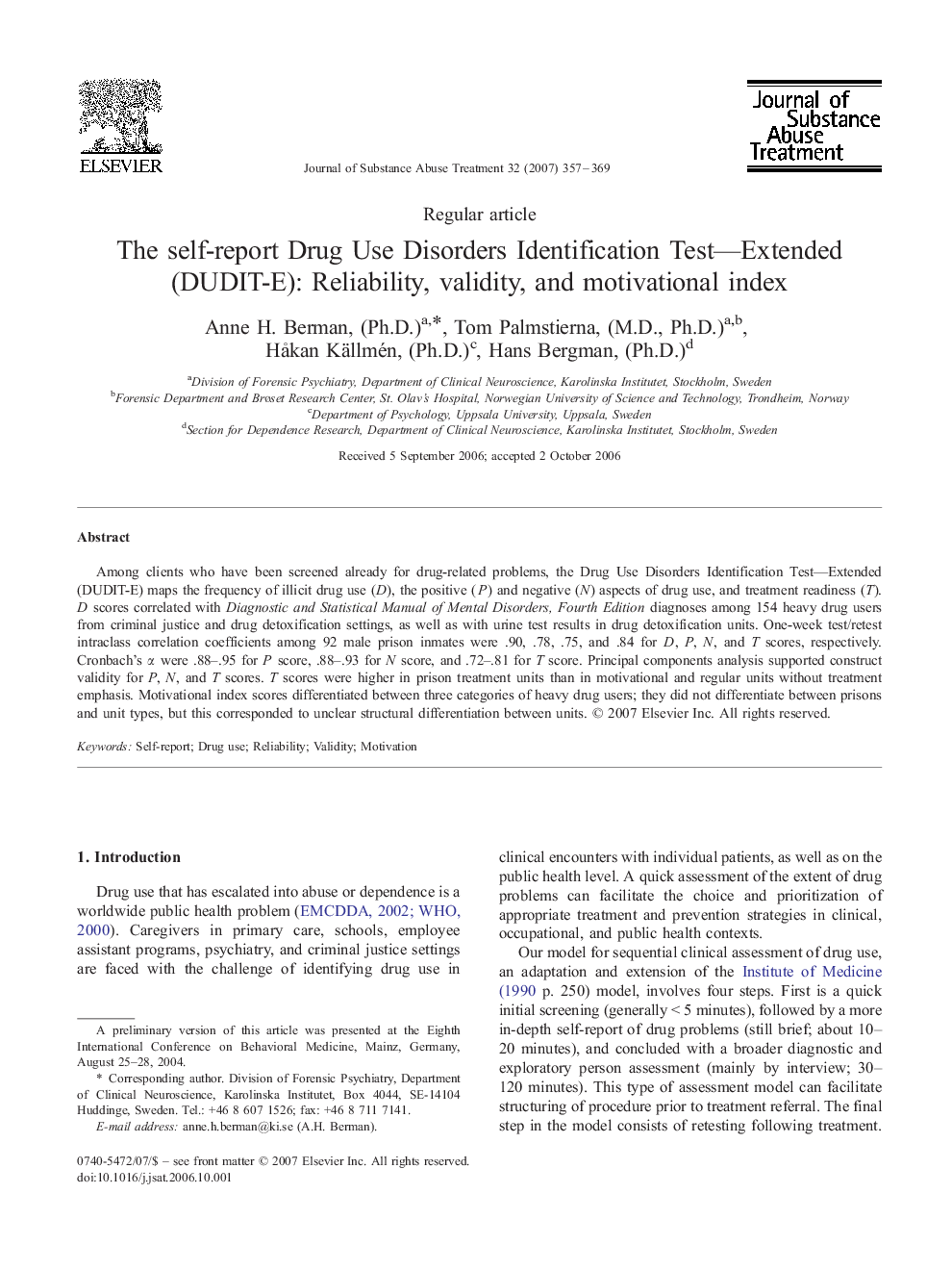| Article ID | Journal | Published Year | Pages | File Type |
|---|---|---|---|---|
| 328386 | Journal of Substance Abuse Treatment | 2007 | 13 Pages |
Among clients who have been screened already for drug-related problems, the Drug Use Disorders Identification Test—Extended (DUDIT-E) maps the frequency of illicit drug use (D), the positive (P) and negative (N) aspects of drug use, and treatment readiness (T). D scores correlated with Diagnostic and Statistical Manual of Mental Disorders, Fourth Edition diagnoses among 154 heavy drug users from criminal justice and drug detoxification settings, as well as with urine test results in drug detoxification units. One-week test/retest intraclass correlation coefficients among 92 male prison inmates were .90, .78, .75, and .84 for D, P, N, and T scores, respectively. Cronbach's α were .88–.95 for P score, .88–.93 for N score, and .72–.81 for T score. Principal components analysis supported construct validity for P, N, and T scores. T scores were higher in prison treatment units than in motivational and regular units without treatment emphasis. Motivational index scores differentiated between three categories of heavy drug users; they did not differentiate between prisons and unit types, but this corresponded to unclear structural differentiation between units.
